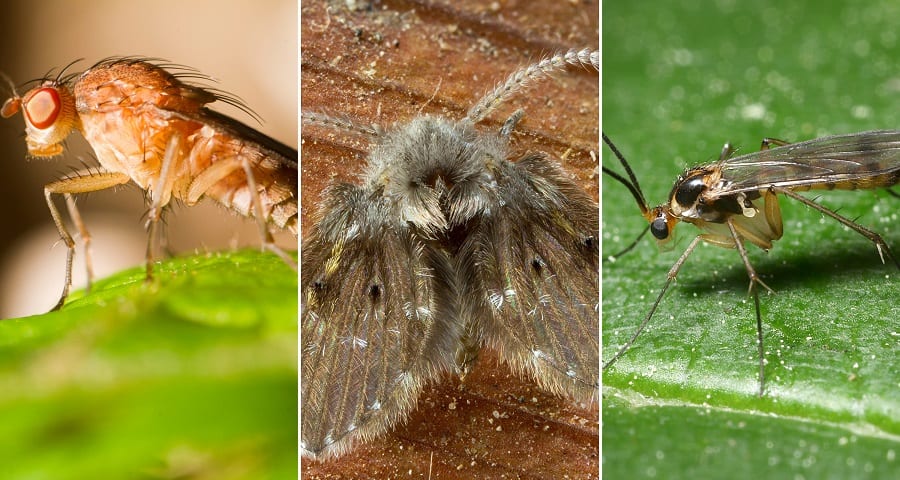READY TO GET STARTED?
REQUEST A FREE ESTIMATE
Fill out the form below or call (888) 466-7849 for a free, no-obligation estimate.

Do you see tiny, flying pests invading your kitchen and the rest of your home? There is a chance that they could be either fruit flies, drain flies, or even gnats. It can be difficult to identify between the three of these, but there are unique characteristics to tell them apart. Identifying them can also be beneficial when trying to prevent them. Let’s break them down.
Fruit flies are the most common flying insects that will pester you in the kitchen. They are attracted to fresh and decomposing fruit, sugary juices, and alcohol. The two most common fruit flies, the red eyed fruit fly and the dark-eyed fruit fly, have striped abdomens. Their eye colors are what give them away.
Some ways to keep fruit flies away are to keep your kitchen and garbage cans clean of any accumulated debris that may attract them. Thoroughly rinse beverage containers, use produce quickly or keep it in the refrigerator, seal garbage cans, and remove trash regularly from the area.
These moth-like, fuzzy pests are commonly found in the kitchen. They thrive in dark, damp conditions and often find an ideal home inside a drain, which can include a floor or sink drain. They don’t bite, but their presence can aggravate asthma in some people. Drain flies appear light gray or tan with a dark border around their wings.
Eliminating drain flies requires a few steps. Once you recognize that you have a drain fly problem, look to tape over the drains and where you suspect they are emerging from and leave it overnight. The next day, check to see if any flies have been collected. If this is the case, your next step is to clean the drain and flush the system.
If you spot a swarm of bugs flitting above a houseplant, you probably have fungus gnats instead of fruit flies. Fungus gnat larva and pupa prefer moist soil to protect them as they develop. Before they progress to adult form, they can severely damage the root system of your potted plants. They have a mosquito-like appearance and are brown or black with light-colored legs.
Preventing fungus gnats should begin with the first houseplant purchase. Look for signs of these pests after purchasing potted plants, and any plant that has gnats already flying around it should be left at the store. It’s also good to be sure your plants aren’t overwatered.
If you have tried all these prevention tips and still think you suspect fruit flies, drain flies, or gnats, then reach out to your local pest control company for more assistance. The professional pest technicians will be able to find the prevention methods that work best for you.
It’s the holiday season and while many plants are losing leaves and color in the cold, poinsettia plants thrive. These winter plants are native to the area around Taxco, Mexico. Their name comes from that of the first United States ambassador to Mexico, Joel R. Poinsett. Though the most popular color for this plant is red, poinsettias also come in pink, white, yellow, speckled or marbled.
A common myth is that these lovely flowered plants are poisonous. In actuality, it is merely recommended not to consume the plant and the sap may cause mild skin irritation to those who are sensitive to it. Still, though this plant may not be recommended for humans, plenty of pests delight in the lovely plant for more than just its beauty.
Pests that may be attracted to poinsettias include white flies, fungus gnats, mealybugs and spider mites. These pests tend to attack either the plant itself or the social surface. Mealybugs, in particular,
will feed on the leaves of the poinsettia plants. If caught early, be sure to gently clean the leaves of your plant with alcohol on a swab.
Northwest Exterminating looks to handle all your pest issues. Even though it’s the holiday season, we are dedicated to keeping your home and work environment pest free. Schedule an appointment today!
Sources:
http://www.uri.edu/ce/factsheets/sheets/poinsettias.html
Melissa Brown
[email protected]